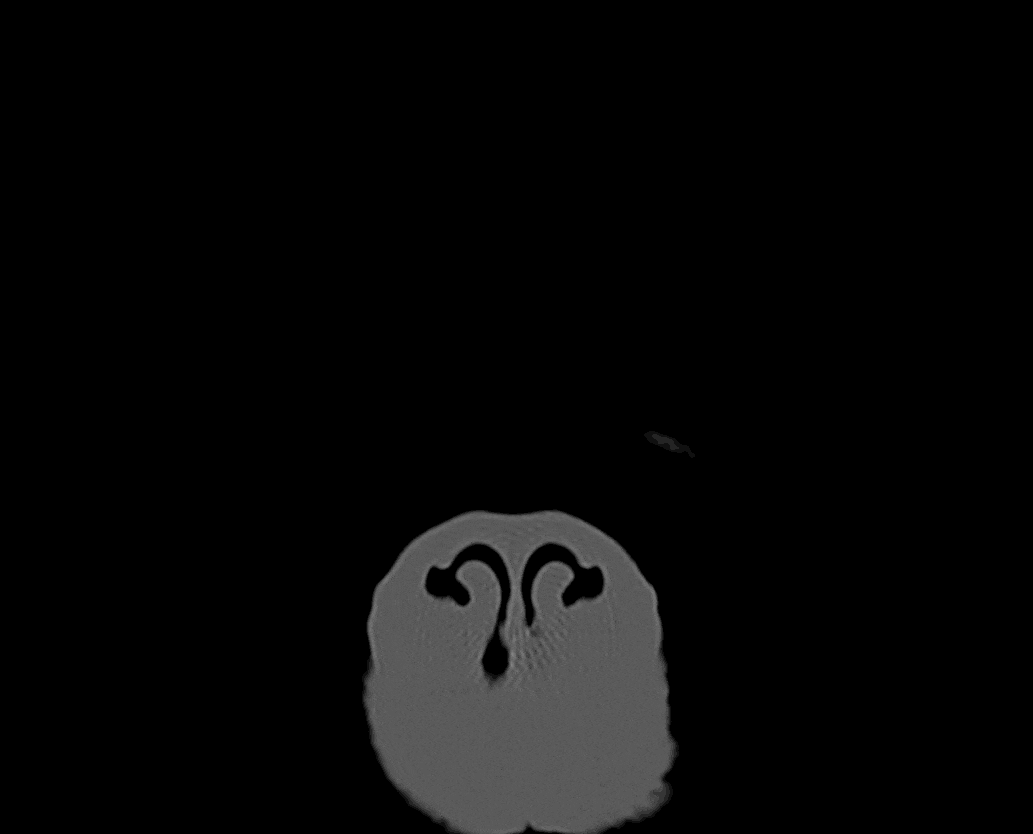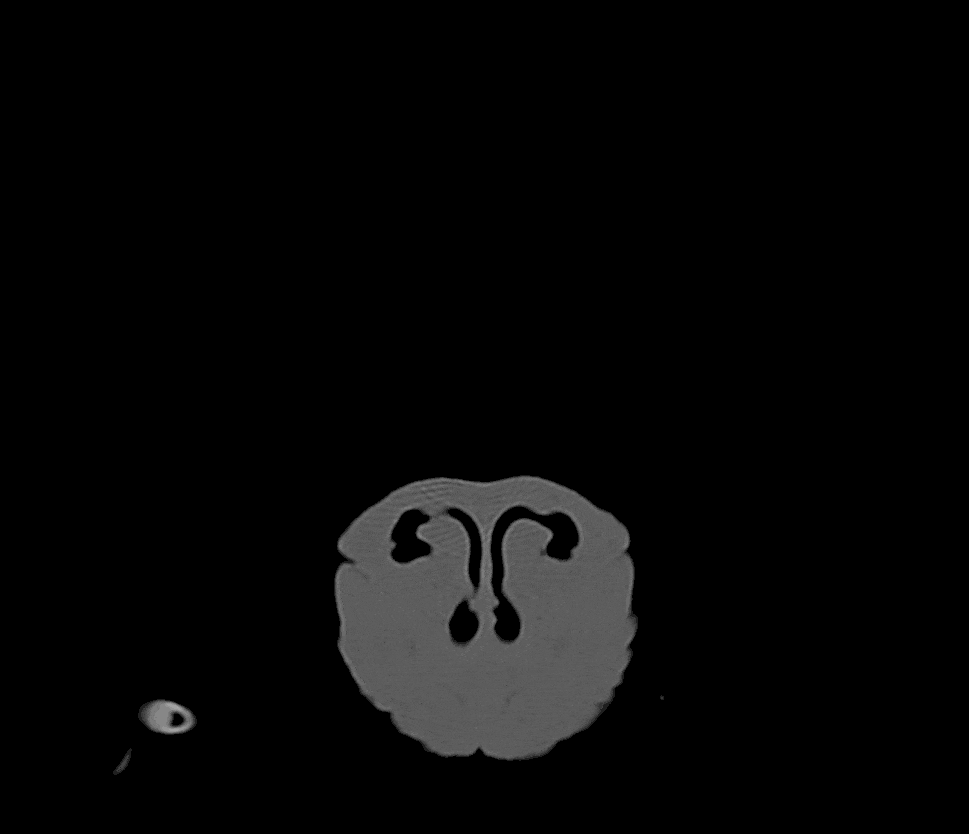Irish Wolfhound Bailey, 1 year
CT images from July 2014. At that time unilateral nasal discharge was present.
CT images from March 2015. This time bilateral nasal discharge was present.
Diagnosis
Description
Severe reduction in size and number of the turbinates in both nasal cavities. Between the remaining turbinates a mild to moderate amount of soft tissue dense material is present. Within the left frontal sinus soft tissue dense material with a fluid level is present (images flipped horizontally, patient was placed in dorsal recumbency during image acquisition). The mucosal lining of the left frontal sinus is thickened. Findings are almost identical in both CT studies.
Radiographic diagnoses
- Bilateral reduction in number and size of nasal turbinates
- Soft tissue dense material between the turbinates
- Sinusitis with fluid accumulation left frontal sinus
Discussion
Changes are compatible with rhinitis- bronchopneumonia syndrome of the Irish Wolfhound. The etiology is unclear. Immune mediated or primary ciliary defects are discussed. A hereditary background is assumed. Affected dogs show transient or persistent mucoid to mucopurulent nasal discharge of variable degree from birth . Concurrent bronchopneumonia can occur (most likely due to the ciliar dysfunction leading to an increased susceptibility for infection).
No progression of the changes is seen over the one year period. No granuloma is visible in the frontal sinus. The paranasal bones are unremarkable, showing no permeative osteolysis. Therefore a fungal rhinitis is less likely. In addition the dog is very young making a fungal rhinitis unlikely as well.
Recommendations
None.
Normal CT study nasal cavity
A reduction in the number of turbinates is not always related to a destructive rhinitis. Consider congenital hypoplasia predisposing the nasal cavity to infection, especially in young dogs.


